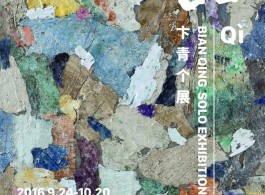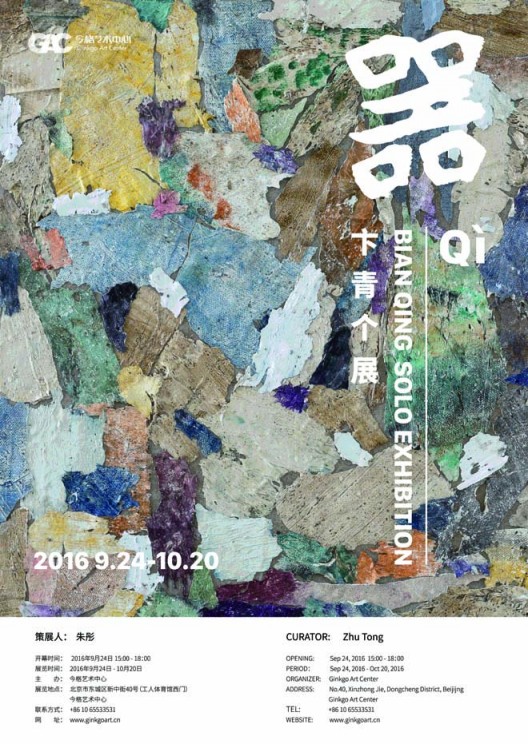Curator: Zhu Tong
Exhibition Period: September 24, 2016 – October 20, 2016
Exhibition Opening: 3:00 pm, September 24, 2016
Venue: Ginkgo Art Center
No.40, Xinzhong Jie, Dongcheng District, Beijing (west gate of the Workers Gymnasium and the east of Asia Hotel)
Opening Hours:10 am–6 pm, Closed on Sunday
Transcendence · Cyan
Research and discussions about art methodology has been very heated in recent years, especially with the transformation of linguistics in the twentieth century, the analysis of “tools” has been dominating such discussions. Both “formality is content” of Wu Guanzhong and Abstraction demonstrate that, in the art field, the creating process and its result are gradually growing apart while their correlation is becoming clearer: the process reflects a certain result, and the result then leads to another process, with the two independent yet interdependent parties growing into coexistent “twins”. And Bian Qing here embeds the potential “cause-and-effect relationship” in the creation of two artworks by cutting and pasting two images. Through the mutual reflection, the artist himself gradually becomes the bridge between the factors contained in the two images until a certain balance is struck between the two. During this process of addition and subtraction, the artist manipulates the whole procedure, much the way that things were cut from the sky and moved to earth to achieve the balance between the two spaces. These two artworks resemble physical objects and phantasm, and together they build a complete system.
With this unique method, Bian Qing tells us a very spectacular logic. Western civilization was born in Greek and Hebrew civilizations, specifically from the Aristotelian Syllogism, which laid a solid foundation for the future development of logic. Logic and deduction hastened the development of science, and humankind seeks to rely on their brain, the masterpiece of God, to control everything in their fight with the elements. Today, when we have reached the forefront of science, many fundamental problems still cannot be solved with sole rationality, and intuitionism and something mysterious ahead are leading human beings to a future of nothingness. The problem is not that human kind is not trying hard enough, but there is some error in their methods or paths. Mechanized logic and reason can only say so much, therefore more and more people in the cultural circles are turning to the East or other fields, for instance, the rising “Zen” in the western world is a way for them to solve such problems with the aid of external force. For people living on our part of the planet, Bian Qing’s works give us an insight into this particular eastern feature: in terms of content, there is no limitation on certain figures, the color is pure yet profound, and the color lumps overlap and absorb one another; in terms of process, the concept of time is eliminated and the picture is organized by the cultivation and instinct of the artist, without any presumptions of the result and follows only the natural flows that lead to the end. The three elements, the work, the artist and the process, are connected in a natural manner and get closer to one other by instinct or some sort of disposition, the “real” stuff becomes clearer to the surface and something natural flows out. It is not a fixed system, but a simple routine of humanity and nature, a “soft” part of the “true me” instead of a stiff framework of “superego”. The artist transcends from reality to a much higher surface, where he walks freely and achieves the ultimate freedom in a pure spiritual space.




